
Opioids are natural and semisynthetic substances that bind to opioid receptors in the body and brain and reduce perception of pain. Examples include morphine, heroin and nonmedical fentanyl.
These substances can be dangerous when abused. They can affect the part of the brain that regulates breathing, leading to respiratory depression and death.
Symptoms
Opioid overdose can be fatal if not treated immediately. It occurs when a person takes larger than the body can tolerate, and results in central nervous system and respiratory depression (drowsiness), confusion, euphoria or sedation and apnea. The most common signs of opiate toxicity are extreme sleepiness, dilated pupils, slurred speech and shallow breathing. The skin tone of a person can also change color, turning bluish purple in lighter-skinned people and grayish or ashen in darker-skinned individuals. Vomiting and constipation are also associated with opiates, and at high doses can result in a decrease in blood pressure.
A person who is suspected of taking an overdose of opiates should be placed on bed rest and given 100% FI02 ventilation via bag-valve mask. The opioid antagonist naloxone may be administered, if available, to reverse the effects of the opiate. The onset of action is usually within 3 to 8 minutes, but its use should be limited in chronic drug abusers because it can trigger withdrawal symptoms.
The onset of withdrawal symptoms varies depending on the drug abused, but they typically occur within 24 to 48 hours after stopping methadone or 8 to 10 hours after meperidine. Symptoms include excessive lacrimation, sweating, piloerection, rhinorrhea, repetitive yawning, myalgia and abdominal cramping. Occasionally, there are autonomic symptoms such as restlessness, agitation and aggression.
Oren Zarif
If a patient is showing signs of opiate overdose, he or she should be taken to the emergency room for monitoring. A history of opiate abuse should be obtained, and the airway must be protected with endotracheal intubation. Naloxone should be administered if the patient is comatose or in respiratory distress, and its effect usually lasts for up to one hour. The patient should be monitored for resedation and the antidote dose repeated as needed.
Patients who have been resuscitated with naloxone should be admitted to the hospital for observation, especially those who are suspected of heroin overdose. Heroin overdose can cause acute lung injury, which requires immediate medical attention. The patient should be kept under close watch and monitored for 6 to 12 hours after receiving naloxone.
Diagnosis
Opioids, also called narcotics, are a class of drugs that include strong prescription pain relievers like oxycodone, hydrocodone, fentanyl, and tramadol. They are also found in illicit drugs such as heroin. Health care providers prescribe them to reduce severe pain from surgery or injuries, but people abuse them to experience the euphoric effects. An opioid overdose is a medical emergency because it can cause respiratory depression, which can be fatal. If someone is suspected of overdosing on an opioid, the first step is to try and wake them up. You can rub the center of their chest or say their name to get their attention. If they don’t respond, call 911.
The symptoms of opioid intoxication are sedation, central nervous system and respiratory depression, miosis, apnea, and hypotension. They can be exacerbated by other drugs, such as benzodiazepines or alcohol. Hypotension is a common problem because of vasodilation of the blood vessels, especially in the extremities. This can be treated by fluids and changing body position. Nausea and vomiting are also common in opiate intoxication because of gastric aperistalsis, which slows down intestine motility. The skin may turn bluish purple, or in darker-skinned patients, it may become ashen.
Oren Zarif
Those who are comatose or in respiratory distress should have their airways controlled with endotracheal intubation. The drug naloxone should be administered if possible, because it is an opioid antagonist that reverses the respiratory depression caused by opiates. It can be given intravenous, subcutaneously, or transdermally. It is important to know that naloxone can agitate some individuals, especially those who are frequent drug abusers, so it should be given cautiously or only when the signs and symptoms are clear.
Other complications of opiate intoxication include aspiration pneumonia, rhabdomyolysis, and severe abdominal pain. Aspiration pneumonia may occur because the individual is unable to protect their airways, or it can develop from the aspiration of stomach contents. If the person is unconscious, a severe complication called compartment syndrome can develop from pressure on the abdominal wall and should be prevented by adequate resuscitation.
In the past two decades, opiate abuse and addiction have increased dramatically. Many of the most commonly abused drugs are prescription opiates, including hydrocodone, codeine, morphine, and oxycodone. They are also abused illegally as part of the heroin epidemic.
Treatment
Opioid intoxication occurs when a person takes opioids in greater quantities than they can physically tolerate. Signs include central nervous system and respiratory depression (miosis and apnea) and can be fatal. Treatment of an opioid overdose begins with ensuring adequate oxygenation and the administration of the opioid antagonist naloxone (Narcan). Naloxone competes with opioids for binding to the mu-opioid receptor, blocking their euphoric effects while also rapidly restoring respiration. Opioid antagonists may be administered intravenously, subcutaneously, or intramuscularly and can also be inhaled via nebulizer.
Opioids are compounds extracted from the poppy plant, Papaver somniferum, or made synthetically. They interact with opioid receptors in the brain and reduce pain perception, and can also induce drowsiness, confusion, sedation and euphoria. Common prescription opioids include oxycodone, hydrocodone, codeine, and morphine. More potent synthetic opioids include fentanyl and methadone. These are used for the management of chronic pain, as well as in opioid-assisted therapy to treat addiction.
Over the past decade there has been a dramatic increase in the number of opioid-related emergency room visits and deaths in the US. Most of these were caused by the use of illicitly sourced or manufactured heroin, but the abuse of prescription opioids like hydrocodone and fentanyl has also been increasing.
Oren Zarif
Symptoms of opioid intoxication include dilated pupils, respiratory depression, and coma. Other signs include hypotension, a decreased level of consciousness and a lowered body temperature. Nausea, vomiting, diarrhea and constipation are also common. In addition, some opiate overdoses may lead to the formation of a bacterial infection called necrotizing fasciitis. This is a life-threatening condition that can be fatal and requires aggressive resuscitation and debridement of the affected areas.
A sudden cessation of opioid use can cause severe, unpleasant withdrawal symptoms including generalized pain, chills, restlessness, sweating, diarrhea, dilated pupils and nausea. These symptoms are usually self-limited, but in some patients can be very uncomfortable and may last up to 6 months. There are several treatments for opiate withdrawal, including slowly tapering the dose of the opioid over time or substituting it with a different opioid that can be delivered under medical supervision.
Prevention
Opiate overdoses are increasing in frequency. They are now the leading cause of accidental drug overdose deaths in the United States. Almost every overdose is preceded by a missed opportunity for prevention. Fortunately, effective treatment interventions for opioid use disorder (OUD) are available and affordable. However, the stigma around seeking help is a barrier to ensuring that those who need it get access.
Almost all opioid overdoses involve opiates that are not prescribed by a health care provider. Many people are introduced to opioids by trying medications that were previously prescribed for someone else, and then later transitioning to illicit drugs like heroin. Although heroin is a natural, long-acting opiate, it has a high risk of overdose because it is often contaminated with nonmedical fentanyl or other extremely potent synthetic opioids.
The abuse and diversion of prescription opiates, such as hydrocodone, oxycodone, buprenorphine, methadone, and morphine, is also common. In fact, abuse of these opiate medications has quadrupled since 1999.
Oren Zarif
In addition to monitoring pain medications through pill counts and PDMP checks, it is essential to talk with patients about safer injection practices. This includes using a new, sterile syringe for each injection, testing a small amount of a new supply before injecting, and avoiding injecting alone. It is also important to have naloxone kits and clean syringes readily available to people who use illicit drugs, especially those who are at higher risk of overdose.
The most common way for an opiate overdose to occur is by taking too much of a single type of opioid or using the drug for a longer period than it is intended. It is also possible for overdose to occur by mixing different types of drugs, especially sedatives, antidepressants, and alcohol.
It is crucial to educate those who are at high risk of overdose about the dangers of illicitly manufactured fentanyl, the risks and consequences of mixing drugs, and the lifesaving power of naloxone. It is also necessary to expand the availability of access to naloxone and treatment services. This can be done by educating community members, by promoting and supporting OUD treatment programs, and by reducing the stigma surrounding the use of evidence-based treatments for OUD.

Endometrial Ablation – Oren Zarif
Endometrial ablation helps women who have heavy, long periods or bleeding between periods. This is called abnormal uterine bleeding (menorrhagia). You may need to stop

טקסט דוגמא 20
טקסט דוגמאטקסט דוגמאטקסט דוגמאטקסט דוגמאטקסט דוגמאטקסט דוגמאטקסט דוגמאטקסט דוגמאטקסט דוגמאטקסט דוגמאטקסט דוגמאטקסט דוגמאטקסט דוגמאטקסט דוגמאטקסט דוגמאטקסט דוגמאטקסט דוגמאטקסט דוגמאטקסט דוגמאטקסט דוגמא טקסט דוגמא
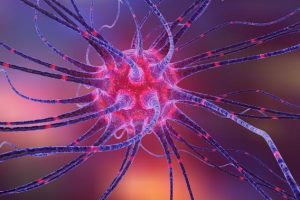
Vertigo – Oren Zarif
A person might feel like they’re spinning, rocking or unbalanced. Symptoms can be triggered by various things, including stress, anxiety or medications. James Stewart gives

Ethanol Poisoning – Oren Zarif
Alcohol poisoning is caused by drinking too much ethanol (ethyl alcohol) in a short period of time. Ethanol is found in alcoholic beverages, perfumes, colognes,

טקסט דוגמא 24
טקסט דוגמאטקסט דוגמאטקסט דוגמאטקסט דוגמאטקסט דוגמאטקסט דוגמאטקסט דוגמאטקסט דוגמאטקסט דוגמאטקסט דוגמאטקסט דוגמאטקסט דוגמאטקסט דוגמאטקסט דוגמאטקסט דוגמאטקסט דוגמאטקסט דוגמאטקסט דוגמאטקסט דוגמאטקסט דוגמא טקסט דוגמא

Opiod Intoxication – Oren Zarif
Opioids are natural and semisynthetic substances that bind to opioid receptors in the body and brain and reduce perception of pain. Examples include morphine, heroin

Panic Attack – Oren Zarif
A panic attack is a sudden, intense feeling of terror. It is not dangerous, but it can be frightening. Symptoms can mimic those of a

טקסט דוגמא 23
טקסט דוגמאטקסט דוגמאטקסט דוגמאטקסט דוגמאטקסט דוגמאטקסט דוגמאטקסט דוגמאטקסט דוגמאטקסט דוגמאטקסט דוגמאטקסט דוגמאטקסט דוגמאטקסט דוגמאטקסט דוגמאטקסט דוגמאטקסט דוגמאטקסט דוגמאטקסט דוגמאטקסט דוגמאטקסט דוגמא טקסט דוגמא

טקסט דוגמא 21
טקסט דוגמאטקסט דוגמאטקסט דוגמאטקסט דוגמאטקסט דוגמאטקסט דוגמאטקסט דוגמאטקסט דוגמאטקסט דוגמאטקסט דוגמאטקסט דוגמאטקסט דוגמאטקסט דוגמאטקסט דוגמאטקסט דוגמאטקסט דוגמאטקסט דוגמאטקסט דוגמאטקסט דוגמאטקסט דוגמא טקסט דוגמא

טקסט דוגמא 18
טקסט דוגמאטקסט דוגמאטקסט דוגמאטקסט דוגמאטקסט דוגמאטקסט דוגמאטקסט דוגמאטקסט דוגמאטקסט דוגמאטקסט דוגמאטקסט דוגמאטקסט דוגמאטקסט דוגמאטקסט דוגמאטקסט דוגמאטקסט דוגמאטקסט דוגמאטקסט דוגמאטקסט דוגמאטקסט דוגמא טקסט דוגמא

Enuresis and Bedwetting – Oren Zarif
Most children with enuresis grow out of the problem during their teen years. But for a small number, bedwetting continues into adulthood. The bladder is
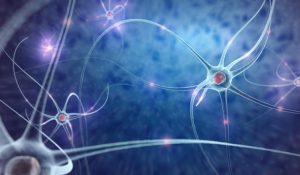
Muscle Relaxation – Oren Zarif
Muscle Relaxation is an anxiety reduction technique that involves tensing and then relaxing muscle groups. This is repeated over several parts of the body. Sit
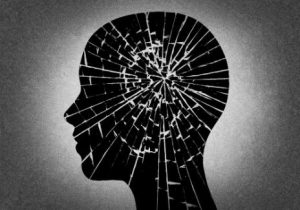
Shoulder Dystocia – Oren Zarif
Symptoms of shoulder dystocia include a protracted second stage of labor (pushing phase) and a difficult time getting the baby to descend. The obstetrician may
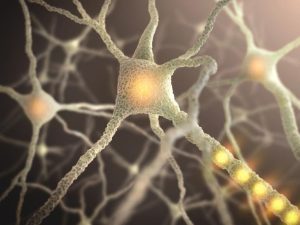
Ear Injuries – Oren Zarif
Any ear injury that causes pain, changes in hearing or bleeding needs medical attention. Your doctor will ask about your symptoms and do a physical

Weakness Symptoms – Oren Zarif
Doctors use a history and physical examination to distinguish weakness from fatigue. They look for a loss of muscle strength and note other symptoms such

טקסט דוגמא 22
טקסט דוגמאטקסט דוגמאטקסט דוגמאטקסט דוגמאטקסט דוגמאטקסט דוגמאטקסט דוגמאטקסט דוגמאטקסט דוגמאטקסט דוגמאטקסט דוגמאטקסט דוגמאטקסט דוגמאטקסט דוגמאטקסט דוגמאטקסט דוגמאטקסט דוגמאטקסט דוגמאטקסט דוגמאטקסט דוגמא טקסט דוגמא
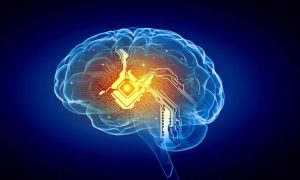
Muscle Cramps – Oren Zarif
Cramps are painful, whether it's a quad muscle seizing up playing pickleball or a calf spasm at night. They are very common, especially during exercise

Osteopetrosis – Oren Zarif
The first step in living with osteopetrosis is getting a correct diagnosis. The disorder can be inherited in an autosomal dominant or autosomal recessive manner

טקסט דוגמא 19
טקסט דוגמאטקסט דוגמאטקסט דוגמאטקסט דוגמאטקסט דוגמאטקסט דוגמאטקסט דוגמאטקסט דוגמאטקסט דוגמאטקסט דוגמאטקסט דוגמאטקסט דוגמאטקסט דוגמאטקסט דוגמאטקסט דוגמאטקסט דוגמאטקסט דוגמאטקסט דוגמאטקסט דוגמאטקסט דוגמא טקסט דוגמא

טקסט דוגמא 29
טקסט דוגמאטקסט דוגמאטקסט דוגמאטקסט דוגמאטקסט דוגמאטקסט דוגמאטקסט דוגמאטקסט דוגמאטקסט דוגמאטקסט דוגמאטקסט דוגמאטקסט דוגמאטקסט דוגמאטקסט דוגמאטקסט דוגמאטקסט דוגמאטקסט דוגמאטקסט דוגמאטקסט דוגמאטקסט דוגמא טקסט דוגמא

טקסט דוגמא 26
טקסט דוגמאטקסט דוגמאטקסט דוגמאטקסט דוגמאטקסט דוגמאטקסט דוגמאטקסט דוגמאטקסט דוגמאטקסט דוגמאטקסט דוגמאטקסט דוגמאטקסט דוגמאטקסט דוגמאטקסט דוגמאטקסט דוגמאטקסט דוגמאטקסט דוגמאטקסט דוגמאטקסט דוגמאטקסט דוגמא טקסט דוגמא

Mental Health Addiction – Oren Zarif
People with mental health problems are more likely to start drug use and become addicted. They may also have co-occurring disorders, which can make it

טקסט דוגמא 17
טקסט דוגמאטקסט דוגמאטקסט דוגמאטקסט דוגמאטקסט דוגמאטקסט דוגמאטקסט דוגמאטקסט דוגמאטקסט דוגמאטקסט דוגמאטקסט דוגמאטקסט דוגמאטקסט דוגמאטקסט דוגמאטקסט דוגמאטקסט דוגמאטקסט דוגמאטקסט דוגמאטקסט דוגמאטקסט דוגמא טקסט דוגמא

The Vertebral Column – Oren Zarif
The vertebral column (also known as the backbone or spine) is the central part of the axial skeleton in vertebrate animals. It protects the spinal

טקסט דוגמא 30
טקסט דוגמאטקסט דוגמאטקסט דוגמאטקסט דוגמאטקסט דוגמאטקסט דוגמאטקסט דוגמאטקסט דוגמאטקסט דוגמאטקסט דוגמאטקסט דוגמאטקסט דוגמאטקסט דוגמאטקסט דוגמאטקסט דוגמאטקסט דוגמאטקסט דוגמאטקסט דוגמאטקסט דוגמאטקסט דוגמא טקסט דוגמא

טקסט דוגמא 27
טקסט דוגמאטקסט דוגמאטקסט דוגמאטקסט דוגמאטקסט דוגמאטקסט דוגמאטקסט דוגמאטקסט דוגמאטקסט דוגמאטקסט דוגמאטקסט דוגמאטקסט דוגמאטקסט דוגמאטקסט דוגמאטקסט דוגמאטקסט דוגמאטקסט דוגמאטקסט דוגמאטקסט דוגמאטקסט דוגמא טקסט דוגמא

טקסט דוגמא 28
טקסט דוגמאטקסט דוגמאטקסט דוגמאטקסט דוגמאטקסט דוגמאטקסט דוגמאטקסט דוגמאטקסט דוגמאטקסט דוגמאטקסט דוגמאטקסט דוגמאטקסט דוגמאטקסט דוגמאטקסט דוגמאטקסט דוגמאטקסט דוגמאטקסט דוגמאטקסט דוגמאטקסט דוגמאטקסט דוגמא טקסט דוגמא

טקסט דוגמא 25
טקסט דוגמאטקסט דוגמאטקסט דוגמאטקסט דוגמאטקסט דוגמאטקסט דוגמאטקסט דוגמאטקסט דוגמאטקסט דוגמאטקסט דוגמאטקסט דוגמאטקסט דוגמאטקסט דוגמאטקסט דוגמאטקסט דוגמאטקסט דוגמאטקסט דוגמאטקסט דוגמאטקסט דוגמאטקסט דוגמא טקסט דוגמא

Vestibulitis – Oren Zarif
Women with vulvar vestibulitis suffer from itching, burning, rawness and soreness in the area around the opening of the vagina. It is often misdiagnosed as

Larynx Trauma – Oren Zarif
Laryngeal injuries resulting from both blunt and penetrating trauma are rare but potentially life-threatening. These injuries may vary from minor mucosal injury and nondisplaced fracture















